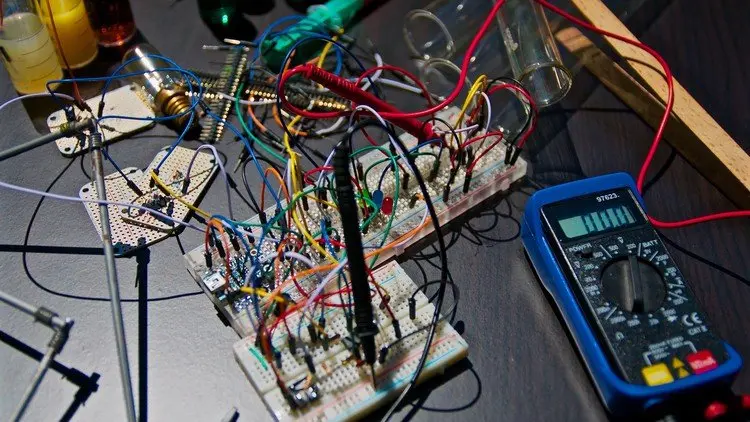Practical approach to Learn BEEE
Practical approach to Learn BEEE

Practical approach to Learn BEEE udemy course
Practical approach to Learn BEEE
What you'll learn:
Practical approach to Learn BEEE
- Learn about the basics of electronics and electrical engineering in a way that is more practical than just reading about them.
- In this class, the student will learn about Kirchhoff’s Current and Voltage law. They will also learn about DC Circuits, AC Circuits, magnetic circuits, motors, and Transducers.
- All of this work is done with software, and everyone can figure it out quickly and easily.
- The BEEE core subject will be easier to learn about if you use a hands-on method.
Requirements:
- Basics course each and every concept is explained in this course.
- 3.8 Instructor Rating
- 8 Reviews
- 1,659 Students
- 6 Courses
Description:
In this course, students will learn a practical approach to BEEE. Electronics engineering is a branch of electrical engineering concerned with the uses of the electromagnetic spectrum and with the application of such electronic devices as integrated circuits and transistors.
Basic Laws: Ohm's law, Kirchhoff's voltage and current laws, Nodes-Branches and loops, Series elements and Voltage Division, Parallel elements and Current Division, Star-Delta transformation, Independent sources and Dependent sources, source transformation.
Electrical engineers design, develop, test, and supervise the manufacture of electrical equipment, such as electric motors, radar and navigation systems, communications systems, or power generation equipment.
Electrical engineering has now subdivided into a wide range of subfields including electronics, digital computers, computer engineering, power engineering, telecommunications, control systems, robotics, radio-frequency engineering, signal processing, instrumentation, and microelectronics.
Electrical current, voltage, resistance, capacitance, and inductance are a few of the basic elements of electronics and radio. Apart from current, voltage, resistance, capacitance, and inductance, there are many other interesting elements to basic electronics technology.
What is basic of electrical?
THE THREE PRIMARY FORCES. The three primary forces in electricity are voltage, current flow, and impedance (resistance). They are the fundamental forces that control every electrical circuit everywhere. Voltage is the force that pushes the current through electrical circuits.
Current is a flow of electrical charge carriers, usually electrons or electron-deficient atoms. The common symbol for current is the uppercase letter I. ... Physicists consider current to flow from relatively positive points to relatively negative points; this is called conventional current or Franklin current.
Who this course is for:
Course Details:
-
2.5 hours on-demand video
-
Full lifetime access
-
Access on mobile and TV
-
Certificate of completion
Practical approach to Learn BEEE udemy free download
Practical approach to Learn BEEE
Demo Link: https://www.udemy.com/course/practical-approach-to-learn-beee/
